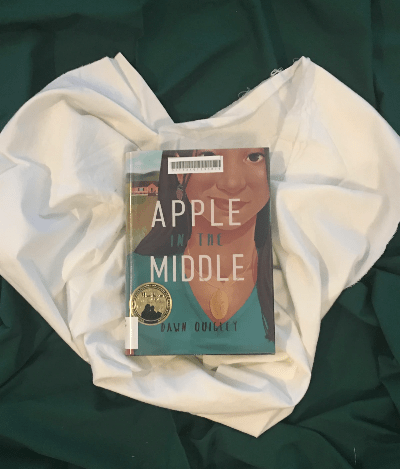
This was an excellent read, a little difficult to get into, but once I did, the masterful use of the "apple" metaphor radiates through everything in a fantastic way.
Apple is the main character, a 14-year-old girl who's been raised by her emotionally clueless, wealthy white dad. She was named Apple by her dying Michif mother after she gave birth and whispered, "you're the apple of my eye."
However, "apple" is also a derogatory term for someone who is Native on the outside but white on the inside. I had a strong negative reaction to this term, knowing as I do how my husband suffered from being called "not Mexican enough" by other kids in high school back-in-the-day, as if any one person is the sole arbiter of how much of any identity one needs to be or to display to be considered "enough."
It's important to know both meanings, however, as Apple will turn that term on its head through the course of the book.
Yes, she's grown up rather spoiled with a rich, physician white dad and white step-mom and step-brother. And no, she's not given any thought at all to her Chippewa origins, not after the kids on the playground call her a racial slur, a "prairie n-word." I don't want to use the word, but teachers need to know it's there and plan a discussion around it, what it means, and specifically why Apple reacts the way she does, turning her back on her Chippewa heritage completely. She wears long sleeves so her skin won't darken in the sun, and while at school, she even pretends to be a foreign exchange student, complete with English and Aussie accents.
When her father drops her off in the Turtle Mountain Reservation so he and his wife can go on an extended summer vacation, her Michif family is waiting with open arms -- even if she's never seen them and honestly, never given them a serious thought before this. They are wonderfully accepting, non-judgemental and loving and welcome her into the fold.
Not everyone on the Reservation is as generous and open or non-judgemental, and that's where the "apple" slur comes in.
The author also plays with the concept of "middle," starting the book in the "middle" of Apple's life, as a teen in high school, long after her birth or the event that sets the whole story in motion. And if stories have beginnings, middles and ends ... well, the ending makes much more sense, is all I'm going to say.
This is a young adult book. There's nothing inappropriate for middle grade / younger readers, but the use of the racial slurs warrants classroom discussions or a read with an adult, parent or guardian so younger readers can ask questions. And, when the book first came out, there was a Twitter discussion of Apple's grandmother's use of the term "voodoo" derogatorily. If using this book in class, know it's there and use it as an opportunity to discuss why the grandmother may have such stereotypical misconceptions about other people and their religions. Also, there's one particularly harrowing situation in which Apple is threatened and assaulted. Younger readers who haven't yet been exposed to this kind of violence or trauma may need an adult nearby to ask questions about what's implied (i.e. not on the page) and what purpose the scene serves in the story.
I loved this book, and wouldn't hesitate for a second to teach it in 9th grade, except I couldn't find a free teaching or educational guide (typically offered by the publisher) to get started.
